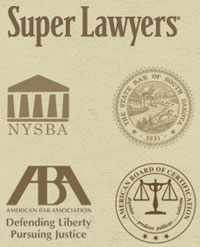I continue to be in a state of puzzlement. My dad would sometimes tell me I was young and naïve. I am now considerably older and by the looks of it still naïve. I always thought South Dakotans said, ‘local control is better.’ This as I was taught is a good maxim for government.
A maxim is a moral rule, principle, or a particular behavior pattern of mankind. I have considered, naively, that local government control is desirable.
Local government control applies to wind farm ordinances. County ordinances covering the development and operation of wind farms are not exclusive of course; the state has adopted a series of statutes and rules administered by the PUC and to an extent the SD GF&P which also apply. Yet the more local government participates in the process the better the representation of residents. Only some counties in South Dakota have adopted local wind farm ordinances also known also as wind energy ordinances.
Wind energy projects create siting issues. The physical placement and configuration of wind turbines, roads, fences, collection lines and the like must be considered. Relevant questions include a project’s impact on existing land use, on a neighbor’s land use, and the environment. These are local issues.
A few months ago on behalf of a landowner client I submitted an extensive letter to a county commission in the state advocating the adoption of a wind energy ordinance. The county had none. I have in the past been accused of being a tree hugger. This criticism is an ad hominem distraction. Neither I nor my client are opposed to wind energy development. I am a third-generation businessman, and in my work have represented natural resource developers.
In the letter to the county, I discussed several things to consider including turbine setbacks, the development application and approval process, decommissioning, infrastructure, and safety. In some counties unfamiliarity with wind technology has kept county leaders from addressing wind development. Contrariwise some counties, like Lincoln County, have adopted significant restrictions on wind energy development.
Creating a county oversight and permitting process, that is – writing a basic wind farm ordinance setting down “rules of the road” gives wind energy projects an affordable, streamlined, and accountable system for legal permitting. On the other hand, open range (meaning no requirements) in which a county has no guidelines is an unsuitable system for a county that has adopted a comprehensive plan.
In Ag and ranch country there are risks in doing nothing. Please consider the matter of abandoned wells and orphaned non-tax-paying gas wells in Harding County. This problem challenges Harding County leaders on questions of how to re-establish a tax base and what party is to clean up all the unused infrastructure.
In a 2013 article in the South Dakota Law Review the author discussed property rights and the preservation of local control in the context of state surface drainage practices. The author said that keeping local oversight is important to county commissions because each county wants to know where related activity occurs within its boundaries; and further wrote that many citizens appreciate local ordinances because these ordinances ensure that a project applicant would, 1. notify the county and the affected landowners and 2. that a public hearing would be scheduled before a proposed project begins. The author’s comments apply equally to a wind energy ordinance. Wind energy ordinances establish reasonable parameters on local planning issues and make the project development process and its operations clearer to residents and the public.





